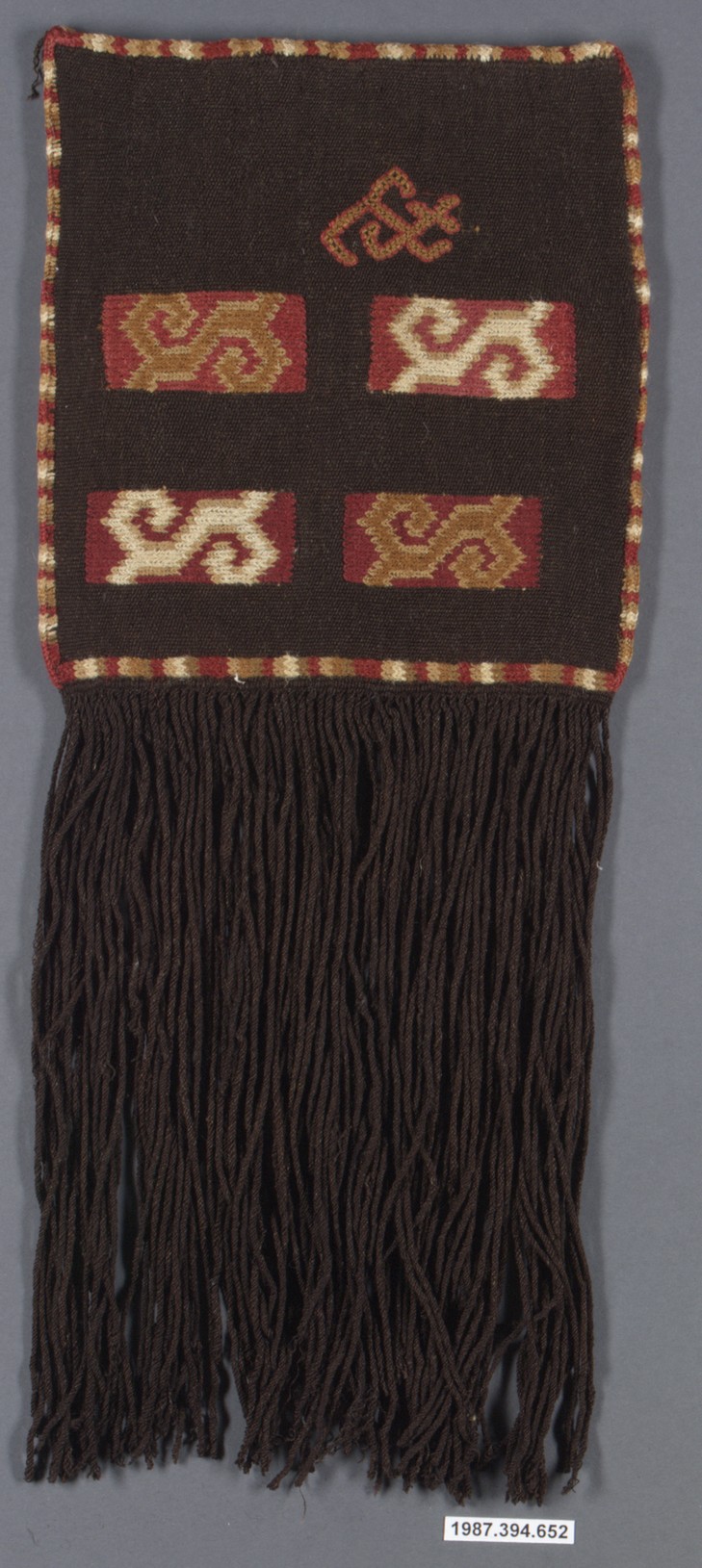Embroidered bag with fringe
The practice of chewing coca leaves goes back more than 8,000 years in Peru (Dillehay et al., 2010). High-status individuals would carry the leaves in finely woven bags such as the present example. Created by a Nasca weaver on Peru’s south coast, the dark brown plain weave was embellished with red, yellow, and white embroidered designs. The textile was then folded, and the sides and bottom were embroidered with threads of the same colors as the designs. The fringes were formed from unwoven warp loops. The bag once had a cord, a fragment of which remains attached to the top (at left in this photo), used to tie the top closed. The design motifs may suggest a connection with the Wari empire—a highland polity that came to dominate much of the coast of Peru in the second half of the first millennium CE. The fact that the bag was made from camelid fiber also is indicative of coast-highland interaction, as llamas and alpacas thrive primarily at higher altitudes.
Chewing coca leaves with quicklime or ash releases cocaine hydrochloride which quickly enters the circulation and produces a mild narcotic effect (Plowman, 1984). The drug is believed to provide energy and mask hunger (Plowman, 1984). In present-day traditional societies, chewing coca leaves involves both social and religious rituals and it is reasonable to think that this was true thousands of years ago (Sharratt, 2014).
References and Further Reading
Allen, Catherine J. The Hold Life Has: Coca and Cultural Identity in an Andean Community, 2nd ed. (Washington, 2002).
Dillehay, Tom D., Jack Rosen, Donald Ugent, Anathasios Karathanasis, Víctor Vásquez, and Patricia J, Netherly. “Early Holocene Coca Chewing in Northern Peru.” Antiquity volume 84 (326) (2010), pp. 939-953.
Lemaitre, Serge. Inca: Textiles and Ornaments of the Andes. Brussels, Belgium: Ludion. 2018.
Plowman, Timothy. “The Ethnobotany of Coca (Erythroxylum spp. Erythroxylaceae) Advances,” Economic Botany, Vol 1. Ethnobotany in the Neotropics (18 September 1984), 94-101.
Sharratt, Nicola. Carrying Coca; 1,500 Years of Andean Chuspas. New York, NY: Bard Graduate Center, 2014.
Stone-Miller, Rebecca. To Weave for the Sun: Andean Textiles in the Museum of Fine Arts, Boston. Boston, MA: The Museum of Fine Arts. Boston. 1992, pp. 96, 98.
Due to rights restrictions, this image cannot be enlarged, viewed at full screen, or downloaded.
This artwork is meant to be viewed from right to left. Scroll left to view more.



